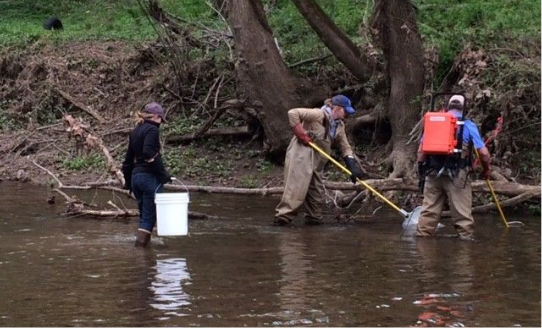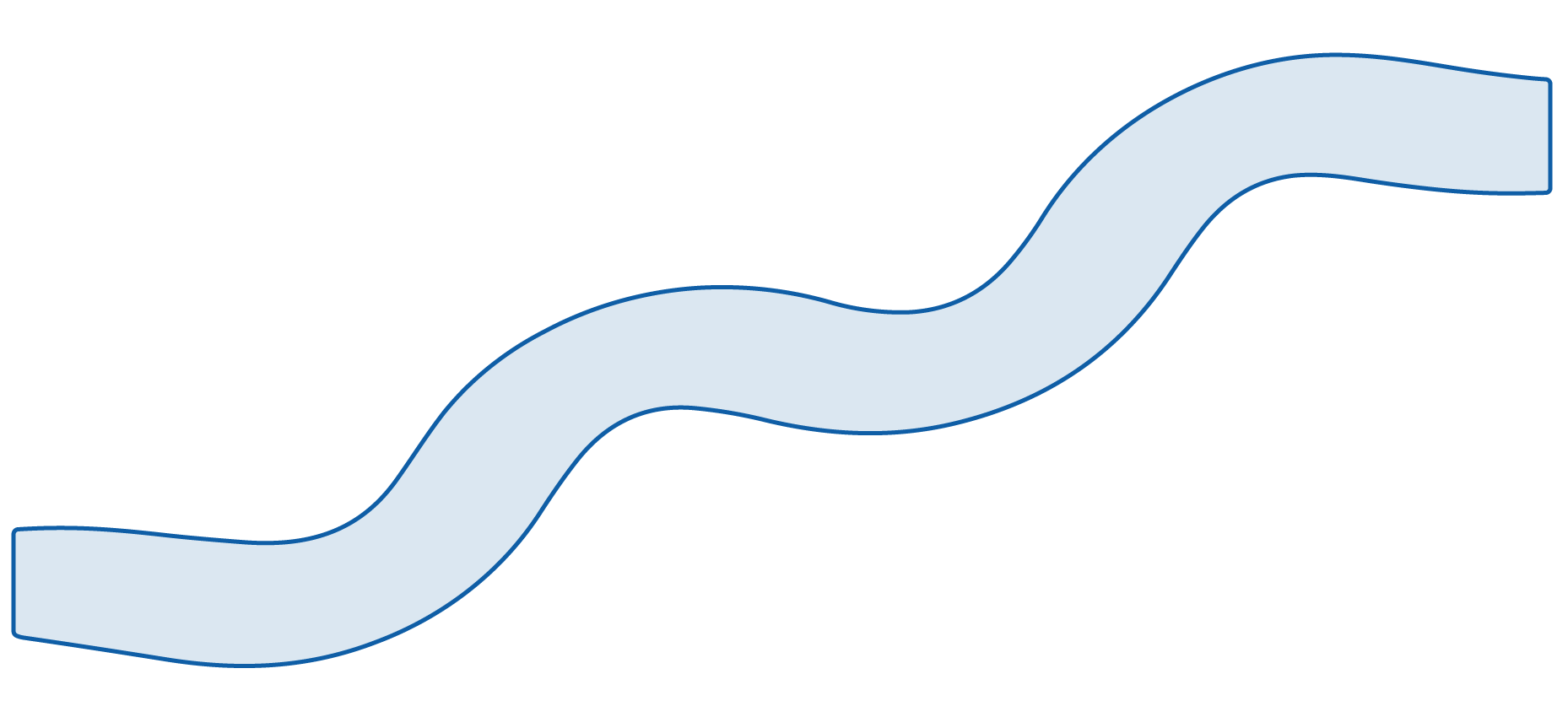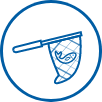Nets are used to collect fish and macro-invertebrates (such as aquatic insects and snails) throughout the stream reach. Macroinvertebrates are collected using a special net, preserved, and sent to experts for identification. Fish are identified in the field and for the most part released. A few fish are also collected to test for mercury and other contaminants in larger fish.
How are these data used?
Nets are used to collect samples for one human health and two biological indicators.
Biological Indicators

The fish indicator characterizes the variety and abundance of fish. Fish are sensitive indicators of physical habitat degradation, environmental contamination, migration barriers and overall ecosystem productivity. They need plants and insects to eat, in-stream and streambank cover for shelter, and overhanging vegetation to shade and cool the water.
Where are fish collected?
sample reach using methods
like electrofishing.

To learn more, see the
NRSA Field Operations Manual.




